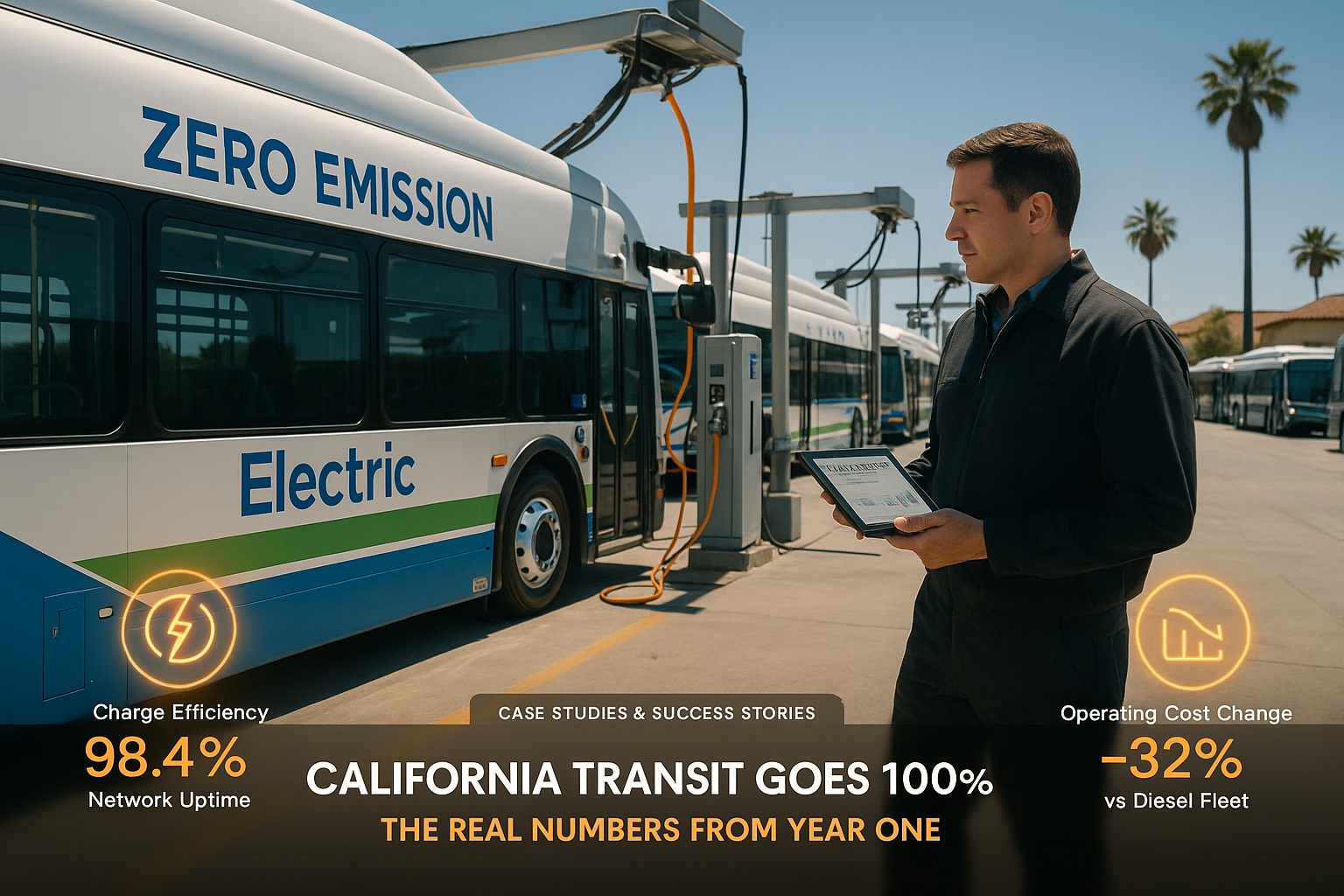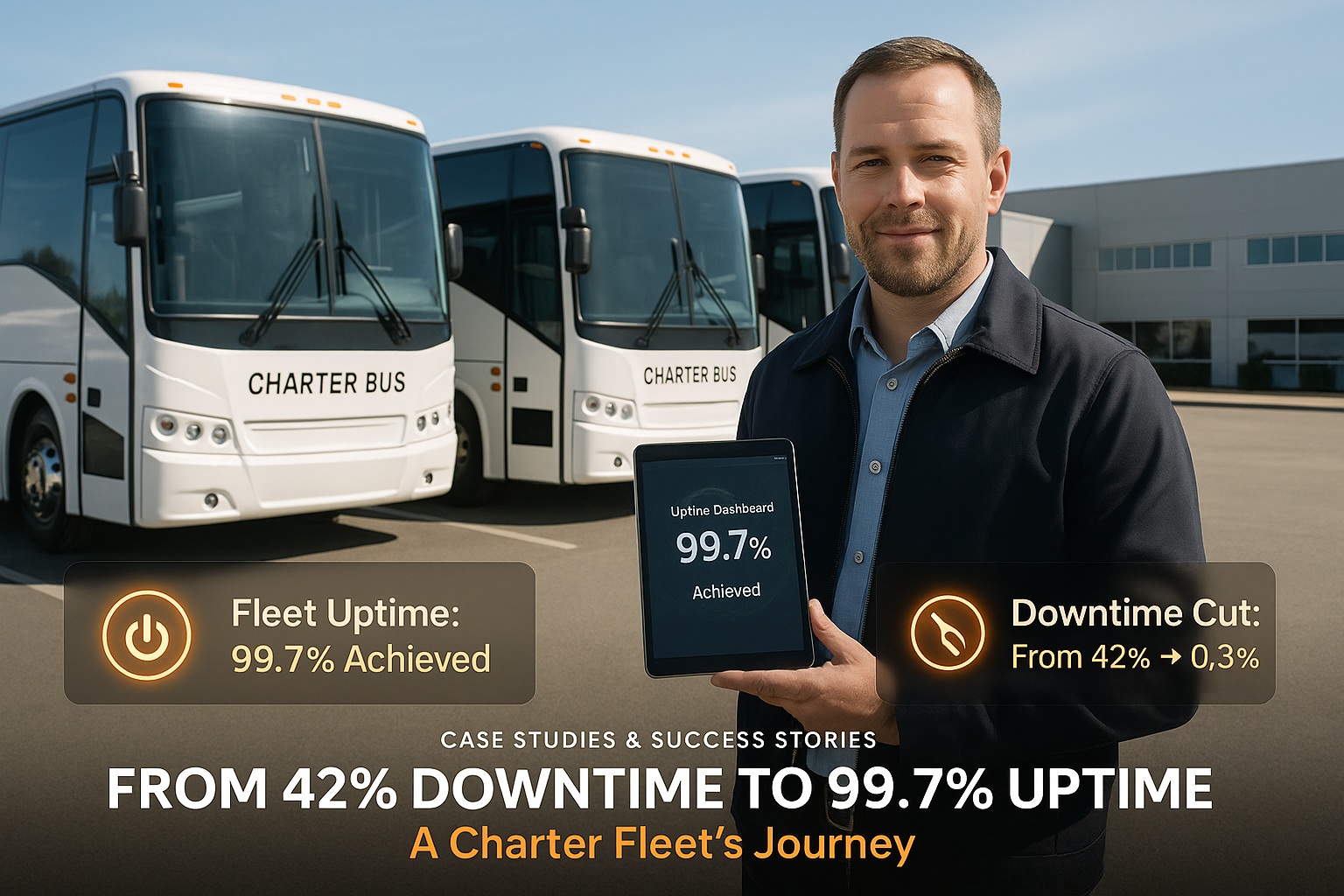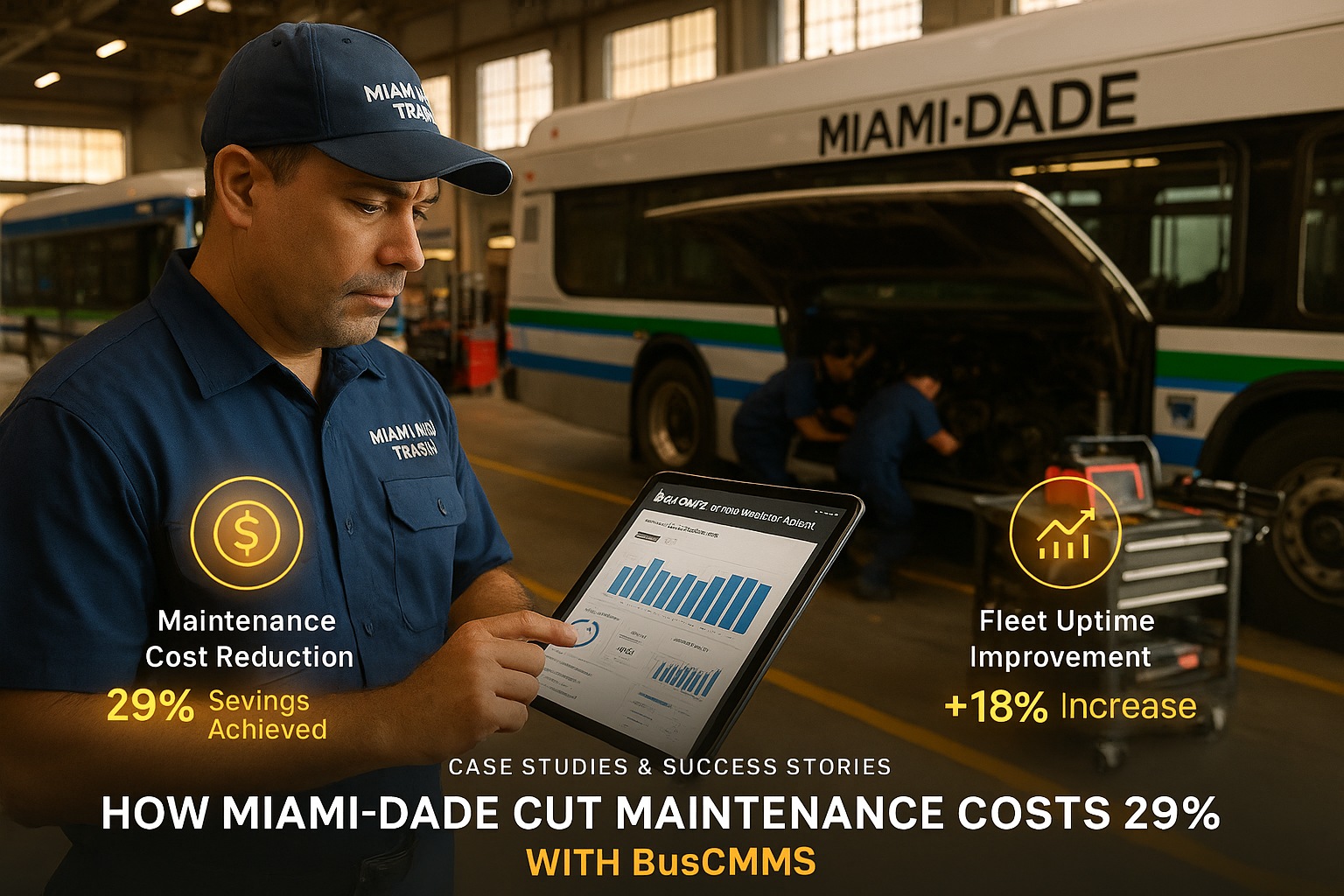In the fast-paced world of intercity and coach bus transportation, maintaining a reliable fleet is crucial for operational success and passenger safety. A well-implemented Computerized Maintenance Management System (CMMS) can be the difference between smooth operations and costly breakdowns on the highway. This comprehensive guide explores the essential CMMS best practices that every bus operator should implement to maximize efficiency, reduce costs, and ensure passenger safety.
Whether you're managing a small regional service or a large intercity fleet, these proven strategies will help you leverage your CMMS to its full potential, transforming your coach fleet maintenance from reactive to proactive.
1. Implement Comprehensive Preventive Maintenance Schedules
The foundation of successful highway bus operations lies in robust preventive maintenance programs. Your CMMS should be configured to automatically schedule maintenance based on multiple triggers including mileage, engine hours, and calendar intervals.
Key Scheduling Strategies:
- Multi-trigger Scheduling: Set up maintenance tasks based on whichever comes first - miles driven, engine hours, or time elapsed
- Route-Specific Adjustments: Adjust maintenance intervals based on route difficulty, weather conditions, and terrain
- Seasonal Considerations: Implement different maintenance schedules for summer and winter operations
- Critical System Priority: Prioritize brake systems, steering components, and safety equipment with more frequent inspections
By implementing these scheduling strategies, you'll reduce unexpected breakdowns by up to 40% and extend your fleet's operational life significantly.
Ready to Optimize Your Fleet Maintenance?
See how our CMMS can transform your bus operations with automated scheduling and comprehensive tracking.
2. Leverage Real-Time Data Integration and Analytics
Modern coach buses generate vast amounts of data through telematics systems, engine diagnostics, and onboard sensors. Integrating this real-time data with your CMMS creates a powerful predictive maintenance capability that can prevent failures before they occur.
Essential Data Integration Points:
- Engine Diagnostics: Automatically import fault codes and performance metrics
- Fuel Consumption Tracking: Monitor efficiency trends that may indicate mechanical issues
- Driver Behavior Data: Track harsh braking, acceleration, and other factors affecting vehicle wear
- Environmental Conditions: Factor in weather, road conditions, and traffic patterns
This data-driven approach allows maintenance teams to make informed decisions about when to service vehicles, often catching issues weeks before they would cause a breakdown. Studies show that operators using integrated data analytics reduce maintenance costs by 25-30% while improving vehicle reliability.
3. Optimize Inventory Management and Parts Procurement
Effective inventory management is crucial for minimizing downtime in coach fleet maintenance. Your CMMS should provide real-time visibility into parts usage, automatic reorder triggers, and supplier performance tracking.
Inventory Optimization Strategies:
- ABC Analysis: Categorize parts by criticality and usage frequency
- Automated Reordering: Set minimum stock levels with automatic purchase order generation
- Supplier Performance Metrics: Track delivery times, quality, and pricing to optimize vendor relationships
- Emergency Stock Management: Maintain strategic reserves of critical components for highway breakdowns
Proper inventory management can reduce parts-related downtime by up to 50% while optimizing carrying costs and cash flow.
4. Establish Robust Work Order Management and Documentation
Comprehensive work order management ensures that maintenance tasks are completed efficiently and documented properly for regulatory compliance and warranty claims. Your CMMS should streamline the entire work order lifecycle from creation to completion.
Work Order Best Practices:
- Standardized Procedures: Create detailed work instructions for common maintenance tasks
- Mobile Accessibility: Enable technicians to access and update work orders from mobile devices
- Photo Documentation: Require before/after photos for major repairs and inspections
- Time Tracking: Monitor labor hours to identify efficiency opportunities
- Quality Control: Implement approval workflows for critical safety-related work
Well-managed work orders not only improve maintenance quality but also provide valuable data for continuous improvement initiatives and regulatory audits.
Transform Your Maintenance Operations Today
Join hundreds of bus operators who have streamlined their maintenance with our comprehensive CMMS solution.
5. Ensure Regulatory Compliance and Safety Standards
The transportation industry faces strict regulatory requirements from DOT, FMCSA, and state agencies. Your CMMS should automate compliance tracking and ensure all required inspections and certifications are maintained.
Compliance Management Features:
- Automated Inspection Scheduling: Track DOT inspections, annual certifications, and state-specific requirements
- Driver Vehicle Inspection Reports (DVIR): Digital capture and follow-up on driver-reported issues
- Audit Trail Maintenance: Complete documentation history for regulatory audits
- Certification Tracking: Monitor technician certifications and training requirements
- Recall Management: Track and manage manufacturer recalls and safety bulletins
Automated compliance management reduces the risk of violations while ensuring passenger safety and protecting your operating authority.
Conclusion
Implementing these CMMS best practices will transform your intercity and coach bus operations from reactive to proactive, resulting in improved safety, reduced costs, and enhanced reliability. The key to success lies in selecting a CMMS that can grow with your operation and adapt to the unique challenges of highway bus operations.
Remember that successful CMMS implementation is an ongoing process that requires commitment from management, proper training for staff, and continuous optimization based on data insights. By following these best practices, you'll create a maintenance program that not only meets regulatory requirements but exceeds passenger expectations for safety and reliability.
The transportation industry is evolving rapidly, and operators who embrace these digital maintenance strategies will have a significant competitive advantage. Start implementing these practices today to build a more efficient, safer, and more profitable bus operation.
Ready to Implement These Best Practices?
Our team of experts is ready to help you implement a CMMS solution tailored to your specific needs. Get started today and see the difference proper maintenance management can make.
Frequently Asked Questions
Q: How much can a CMMS reduce maintenance costs for coach bus operations?
Studies show that properly implemented CMMS solutions can reduce maintenance costs by 25-30% through better scheduling, inventory management, and predictive maintenance capabilities. The exact savings depend on your current maintenance practices and fleet size.
Q: What are the most critical maintenance intervals for intercity buses?
Critical intervals include daily pre-trip inspections, weekly safety checks, 6,000-mile preventive maintenance, quarterly brake inspections, and annual DOT inspections. However, intervals should be adjusted based on route conditions, vehicle age, and manufacturer recommendations.
Q: How does CMMS help with DOT compliance for bus operators?
CMMS automates inspection scheduling, maintains complete audit trails, tracks driver vehicle inspection reports (DVIRs), manages technician certifications, and ensures all required maintenance is completed on time. This comprehensive documentation helps pass DOT audits and reduces violation risks.
Q: Can CMMS integrate with existing telematics and fleet management systems?
Yes, modern CMMS solutions offer extensive integration capabilities with telematics systems, fuel management platforms, and other fleet management tools. This integration enables real-time data sharing and more accurate maintenance scheduling based on actual vehicle usage and performance.
Q: What ROI can bus operators expect from implementing a CMMS?
Most bus operators see ROI within 6-12 months through reduced downtime, lower maintenance costs, improved fuel efficiency, and extended vehicle life. Typical returns range from 300-500% within the first two years, with larger fleets seeing even greater benefits due to economies of scale.








